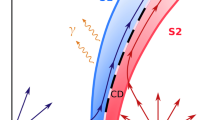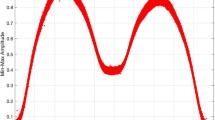Abstract
The study of detached eclipsing binaries in open clusters can provide stringent tests of theoretical stellar evolutionary models, which must simultaneously fit the masses, radii, and luminosities of the eclipsing stars and the radiative properties of every other star in the cluster. We review recent progress in such studies and discuss two unusually interesting objects currently under analysis. GV Carinae is an A0m+A8m binary in the Southern open cluster NGC 3532; its eclipse depths have changed by 0.1 mag between 1990 and 2001, suggesting that its orbit is being perturbed by a relatively close third body. DW Carinae is a high-mass unevolved B1V + B1V binary in the very young open cluster Collinder 228, and displays double-peaked emission in the centre of the Hα line which is characteristic of Be stars. We conclude by pointing out that the great promise of eclipsing binaries in open clusters can only be satisfied when both the binaries and their parent clusters are well-observed, a situation which is less common than we would like.
Access this chapter
Tax calculation will be finalised at checkout
Purchases are for personal use only
Preview
Unable to display preview. Download preview PDF.
Similar content being viewed by others
References
Andersen, J.: Accurate masses and radii of normal stars. A&ARv 3, 91 (1991)
Andersen, J.: Spectroscopic observations of eclipsing binaries. III. Definitive orbits and effects of line blending in CV Velorum. A&A 44, 355–362 (1975)
Chaboyer, B.: Absolute ages of globular clusters and the age of the universe. ApJ 444, L9–12 (1995)
Clausen, J.V.: Eclipsing binaries as precise standard candles. New Astronomy Reviews 48, 679–685 (2004)
Etzel, P.B.: A photometric analysis of WW Aurigae Master’s Thesis, San Diego State University (1975)
González, J.F., Lapasset, E.: Spectroscopic binaries and kinematic membership in the open cluster NGC3532. AJ 123, 3318–3324 (2002)
Pols, O.R., Schröder, K.-P., Hurley, J.R., Tout, C.A., Eggleton, P.P.: Stellar evolution models for Z = 0.0001 to 0.03. MNRAS 298, 525–536 (1998)
Popper, D.M., Etzel, P.B.: Photometric orbits of seven detached eclipsing binaries. AJ 86, 102–120 (1981)
Porter, J.M., Rivinius, T.: Classical Be stars. PASP 115, 1153–1170 (2003)
Simon, K.P., Sturm, E.: Disentangling composite spectra. A&A 281, 286–291 (1994)
Southworth, J., Maxted, P. F. L., Smalley, B.: Eclipsing binaries in open clusters. I. V615 Per and V618 Per in h Persei. MNRAS 349, 547–559 (2004a)
Southworth, J., Maxted, P.F.L., Smalley, B.: Eclipsing binaries in open clusters. II. V453 Cygni in NGC6871. MNRAS 351, 1277–1289 (2004b)
Southworth, J., Zucker, S., Maxted, P.F.L., Smalley, B.: Eclipsing binaries in open clusters. III. V621 Persei in χ Persei. MNRAS 355, 986–994 (2004c)
Southworth, J., Maxted, P.F.L., Smalley, B.: Eclipsing binaries as standard candles: HD 23642 and the distance to the Pleiades. A&A 429, 645–655 (2005a)
Southworth, J., Smalley, B., Maxted, P.F.L., Claret, A., Etzel, P. B.: Absolute dimensions of detached eclipsing binaries. I. The metalliclined system WW Aurigae. MNRAS 363, 529–542 (2005b)
Thompson, I.B., et al.: Cluster AgeS Experiment: The age and distance of the globular cluster ω Centauri determined from observations of the eclipsing binary OGLEGC 17. AJ 121, 3089–3099(2001)
Wilson, R.E., Devinney, E.J.: Realization of accurate close binary light curves: application to MR Cygni. ApJ 166, 605–619 (1971)
Zucker, S., Mazeh, T.: Study of spectroscopic binaries with TODCOR. I. A new two-dimensional correlation algorithm to derive the radial velocities of the two components. ApJ 420, 806–810 (1994)
Author information
Authors and Affiliations
Corresponding author
Editor information
Editors and Affiliations
Rights and permissions
Copyright information
© 2006 Springer Science+Business Media B.V.
About this chapter
Cite this chapter
Southworth, J., Clausen, J.V. (2006). Eclipsing Binaries in Open Clusters. In: Giménez, À., Guinan, E., Niarchos, P., Rucinski, S. (eds) Close Binaries in the 21st Century: New Opportunities and Challenges. Springer, Dordrecht. https://doi.org/10.1007/978-1-4020-5027-5_49
Download citation
DOI: https://doi.org/10.1007/978-1-4020-5027-5_49
Received:
Accepted:
Publisher Name: Springer, Dordrecht
Print ISBN: 978-1-4020-5026-8
Online ISBN: 978-1-4020-5027-5
eBook Packages: Physics and AstronomyPhysics and Astronomy (R0)




